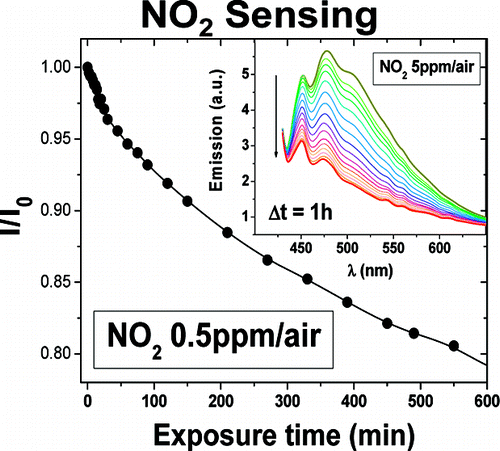F.J. Aparicio, I. Blaszczyk-Lezak, J.R. Sánchez-Valencia, M. Alcaire, J.C. González, C. Serra, A.R. González-Elipe, A. Barranco
Journal of Physical Chemistry C, 116 (2912) 8731-8740
doi: 10.1021/jp209272s

This work reports the preparation, by a new remote assisted plasma deposition process, of luminescent nanocomposite thin films consisting of an insoluble organic matrix where photonically active perylene molecules are embedded. The films are obtained by the remote plasma deposition of adamantane and perylene precursor molecules. The results show that the adamantane precursor is very effective to improve the perylene–adamantane nanocomposite transparency in comparison with plasma deposited perylene films. The plasma deposited adamantane films have been characterized by secondary-ion mass spectrometry and FT-IR spectroscopy. These techniques and atomic force microscopy (AFM) have been also used for the characterization of the nanocomposite films. Their optical properties (UV–vis absorption, fluorescence, and refractive index) have been also determined and their sensing properties toward NO2 studied. It is found that samples with the perylene molecules embedded within the transparent plasma deposited matrix are highly sensitive toward this gas and that the sensitivity of the films can be adjusted by modifying the aggregation state of the perylene molecules, as determined by the analysis of their fluorescence spectra. By monitoring the fluorescence emission of these films, it has been possible to detect a NO2 concentration as low as 0.5 ppm in air at room temperature. Because of their chemical stability and transparency in the UV region, the remote plasma deposited adamantane thin films have revealed as an optimum host matrix for the development of photonically active composites for sensing applications.

